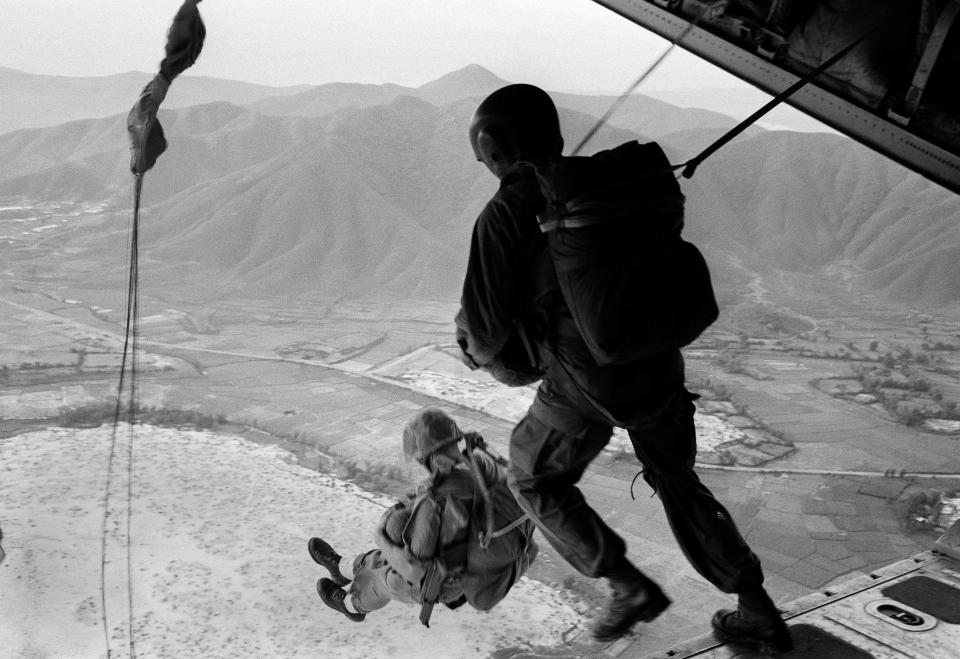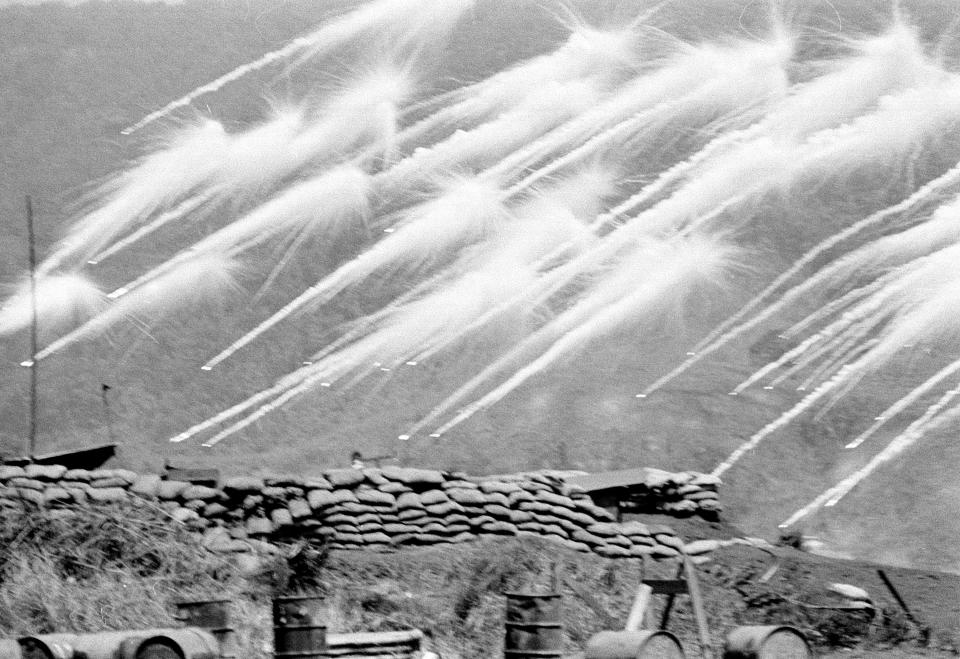Revisiting the 7th Regiment's bloody fight in the Central Highlands of South Vietnam | Opinion
Fifty eight years ago this fall, eight months after the introduction of U.S. combat troops into Vietnam, the men of the 1st Cavalry Division were tasked with the job of finding and engaging the new enemy.
The North Vietnamese army had been infiltrating Pleiku province and, more specifically, the strategic wilds of the Central Highlands of South Vietnam. This sparsely populated region was known for impenetrable forests and jungle, giving way to fields of scrub brush and the ubiquitous 5-foot tall elephant grass. It was a haven for ambush and concealment.
The troopers of the 7th Regiment−and more specifically the First Battalion−would be the spear in initiating the upcoming campaign in this desolate area. The Ia Drang was a semi-mountainous series of cul-de-sacs, which were to be a nightmare to plan and execute operations in.
Lt. Colonel Hal Moore, a Kentucky native and experienced combat officer, had been with the battalion stateside for a year, so he knew its strengths and capabilities. He had been picked a year earlier to be the lead officer in planning the new concept of ‘Air Mobility’ in combat, where infantry is inserted directly into battle. His men had already fought in multiple firefights since arriving in August, so by November were acclimated to the heat and terrain.

The Ia Drang campaign had been initiated the previous month. However, the operation that would commence on November 14, 1965, would be further from their primary base of operations in an unfamiliar area. As the helicopter landings commenced on Sunday morning of the 14th, towering above “LZ-X-Ray,” as it was designated, was Chu Pong Massif; a 1,000-foot mountain overlooking the football-sized clearing. It would take several hours to get the four rifle-companies into the zone, allowing plenty of time for the enemy to organize an attack.
As Lt. Colonel Moore’s command group disembarked from the aircraft along with the first company, they established a CP and dispatched small patrols. Within 90 minutes, the men of Bravo Company had made contact and the fight was on.

Defending the landing zone and perimeter
As morning turned to afternoon, dozens of soldiers leapt from hovering choppers under heavy fire, quickly deploying into the 360-degree posture around the area. What was an offensive operation quickly devolved into one of defending the landing zone and perimeter. By 4 pm, the entire battalion had landed−and were engaged in a desperate fight.
Moore was employing all combat arms at his disposal at this point: artillery, gunships and fighter jets disgorging a variety of ordnance. The fighting increased in intensity as the day progressed and, by 8 p.m., had calmed. Throughout the night a platoon of Bravo, which had become separated, was under intense pressure as the 29-man unit had nine dead and sixteen wounded. During a long night of unfathomable terror, the men fought off three separate attacks from an enemy committed to killing every American on the small knoll.
As dawn broke, several attempts were made to rescue the separated platoon to no avail. Its first lieutenant, platoon sargeant and company first sergeant had all been killed. A squad leader, leading the beleaguered unit, continued to call in artillery rounds on his position to keep the enemy at bay.
At this time, around the battalion perimeter all four companies were heavily engaged. The 425 men of the First Battalion, Seventh Regiment were fighting two enemy regiments numbering some 2,500. Bravo and Charlie were particularly under heavy pressure, as wave after wave of the fanatical enemy charged.
As the strategic situation was becoming potentially desperate, “Broken Arrow” was radioed in, which alerted every available aircraft in that part of Vietnam to come to their aid. Throughout the day the battle continued unabated, as Huey pilots braved the withering fire to bring in water, ammunition and medical supplies, and fly out the wounded. As the afternoon crept to evening, the attacks tapered with both sides licking wounds from 10 hours of continuous combat.
Probes were made into the American lines throughout the night. As the third day dawned, numerous enemy attempts to overrun trooper positions occurred. However, by noon the intensity waned, and only sporadic fighting occurred. The fighting ended unceremoniously that afternoon. The First of the Seventh’s casualties were 79 killed, with 121 wounded. Enemy numbers by body count numbered 634, with undoubtedly many more killed by evidence of being dragged off by their comrades and the continuous American bombing attacks.
It should be recognized that the 2nd of the 5th Cavalry was in an intense all-day fight on the 17th, only two miles away from X-Ray. They came under extremely heavy attacks, with horrific losses−of 155 killed in action and 129 wounded in action. Total US casualties in the Ia Drang campaign were 304 killed and 425 wounded.
To remember these men on this most solemn of weekends is incumbent; so many gave their last measure in that terrible cauldron of battle.
Cobb Hammond, a longtime financial adviser in Memphis, writes regularly about military history.
This article originally appeared on Memphis Commercial Appeal: Bloody fight Central Highlands South Vietnam

